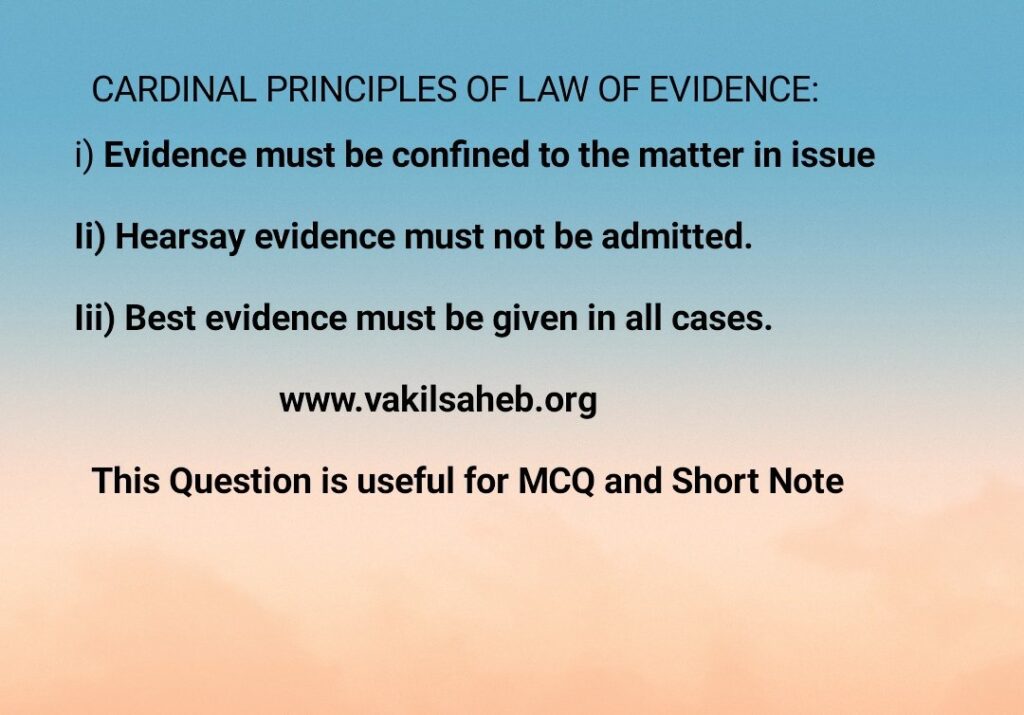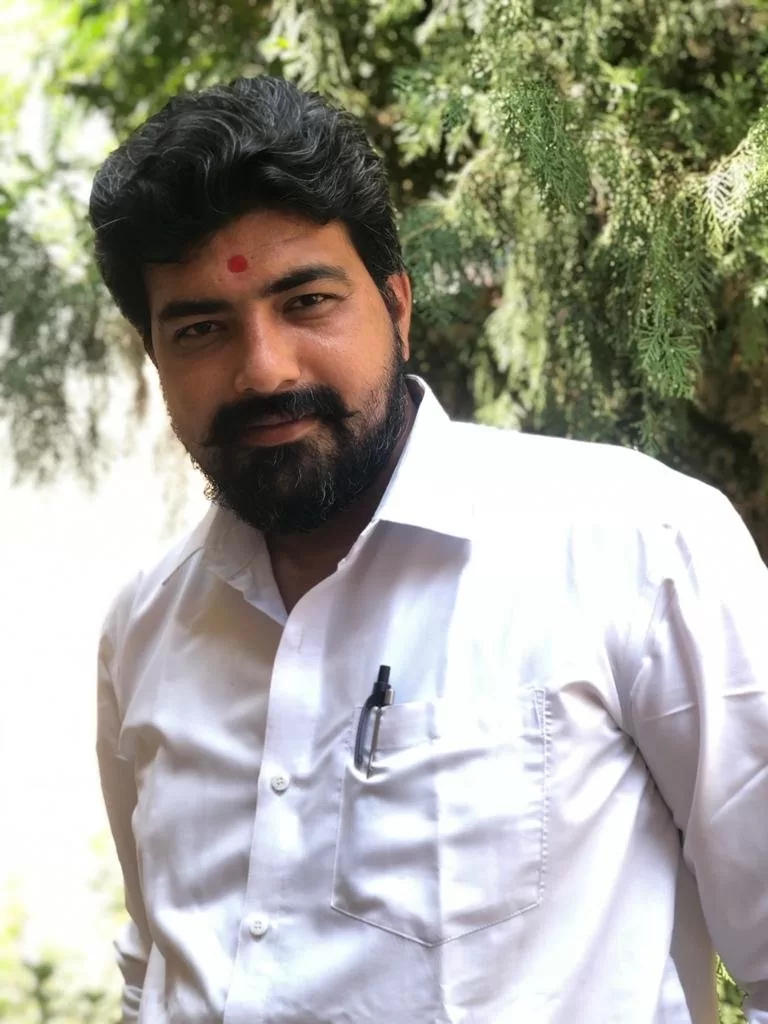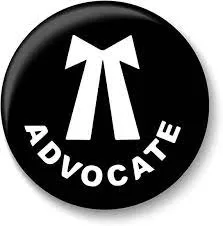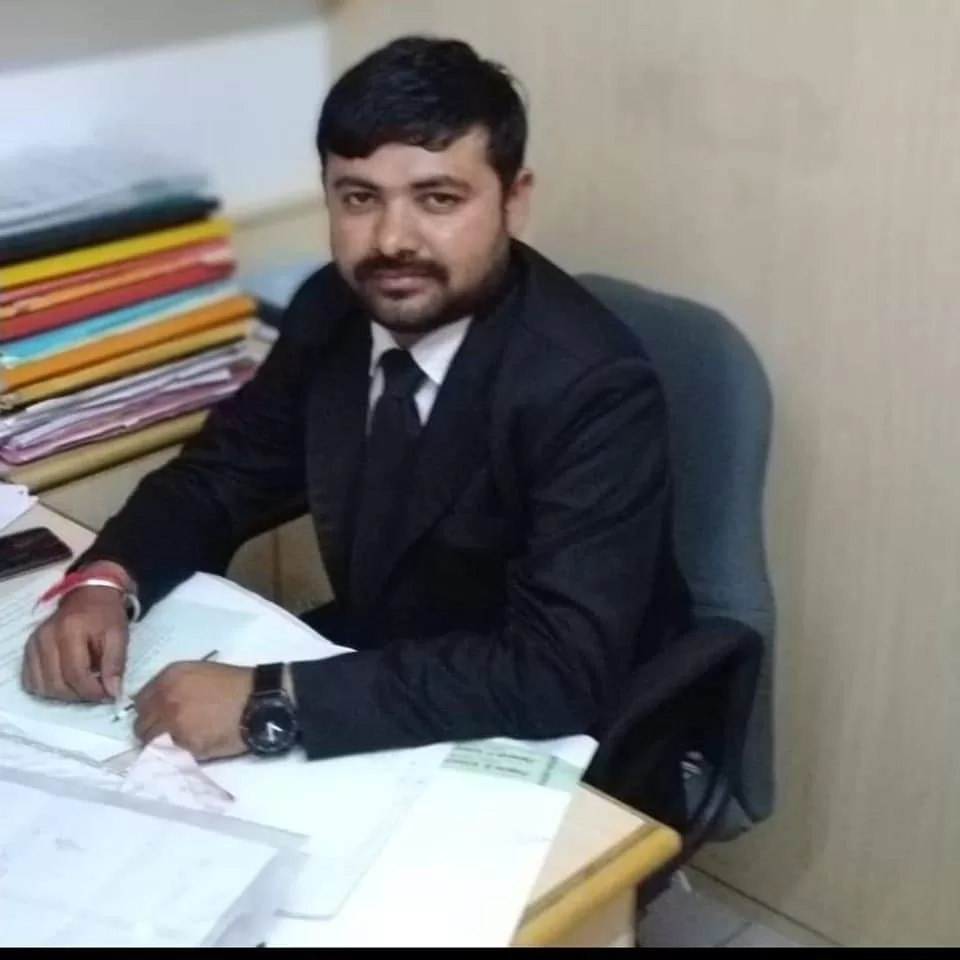
(1) Best Evidence Rule: The primary rule of evidence is that always best evidence must be given in all cases. If there exists a dilemma about the quality of evidence to produce and the depth of investigation, there is a simple rule of evidence law which declares that, in order to prove something that is said or pictured in a piece of writing, recording it, or photographing the original must be provided unless the original is lost, destroyed, or otherwise unobtainable.
When judges decide a case, they are basically weighing the evidence from both sides and adding them up according to the values assigned to them, to arrive at a verdict of guilty or not guilty.
For instance, the prosecution is required to provide a lot of evidence to establish a case, while the defence merely has to show an ambiguity or a doubt that may destroy the case.
Typically, in a criminal case, the burden of proof on the prosecution is greater.
(2) Confined to Fact in Issue/ Relevant Fact: Evidence must be confined to the matter in issue/ fact-in-issue/ relevant facts;
(3) No Hearsay Evidence: Hearsay evidence must not be admitted. However, following are the exception to the principle that hearsay evidence is not admitted despite of the fact that these are hearsay evidence (acronym “CARD”)—
- Confessions,
- Admission,
- Res Gestae,
- Dying Declaration
The word “evidence” is used in the Indian Evidence Act, 1872 (hereinafter referred to as ‘Act’) in different phrases, i.e. best evidence, direct evidence, circumstantial evidence, documentary evidence, substantive evidence, corroborative evidence, derivative evidence, hearsay evidence, indirect evidence, oral evidence, original evidence, presumptive evidence, real evidence, primary evidence and secondary evidence. The Hon’ble Supreme Court in Kalyan Kumar Gogoi v. Ashutosh Agnihotri and Anr. [AIR 2011 SC 760], has held that “The word “evidence” is used in common parlance in three different senses: (a) as equivalent to relevant, (b) as equivalent to proof, and (c) as equivalent to the material, on the basis of which Courts come to a conclusion about the existence or non-existence of disputed facts.” “
However, oral and documentary evidence are the two main kinds of evidence. Oral evidence includes direct evidence and also substantive and corroborative evidence, whereas, documentary evidence only includes substantive and corroborative evidence. Therefore, appreciation of evidence in suits, more specifically deals with oral and documentary evidence.
Section 59 and 60 of the Act deals with oral evidence. Oral evidence of a witness is generally admissible evidence if he has direct and personal knowledge of the fact deposed by him. It is apropos, here to refer ‘section 3’ of the Act, which says that “all statements which the Court permits or requires to be made before it by witnesses, in relation to matters of fact under inquiry, such statements are called oral evidence”. Whereas, in the case of documentary evidence, the Act classifies documents into two types: one is a ‘public document’ in terms of Section 74 of the Act, and the other are certified copies as contained in Section 77 of the Act.
Now the question arises how oral evidences are excluded by documentary evidence.
In India, the best evidence rule has been regarded as a fundamental principle upon which the law of evidence depends, although it is not particularly mentioned anywhere but is the basis of section 91 and 92 of the Indian Evidence Act 1872.
Section 91 of the Act lays down the provision that when evidence related to contracts or grants or other depositions of the property is reduced as a document, then no evidence is required to be given for proof of those matters except the document itself.
There are two exceptions to these provisions:
(1) When a public officer is required by law to be appointed in writing; and any officer has acted as such, the writing need not be proved;
(2) Will admitted to probate in India may be proved by the probate.
Section 91 of the evidence act mainly says that we should produce the original document for proving the contents of the same but however, it does not prohibit the parties to adduce some evidence in case the deed is capable of being construed differently for proving the way they understood [Tulsi v. Chandrika Prasad AIR 2006 SC 3359].
On the other hand, Section 92 further excludes the evidence of oral agreements. It is relevant to note that after the document has been produced to prove its terms under Section 91, the provisions of Section 92 is triggered for the purpose of excluding evidence of any oral agreement or statement, for the purpose of contradicting, varying, adding to or subtracting from its terms. There are six provisos to this Section, viz:
Proviso (1): The facts which invalidates the document
Proviso (2): Separate oral arguments
Proviso (3): Separate oral arguments as a condition precedent
Proviso (4): Distinct oral agreements made subsequently to renew or modify the contract
Proviso (5): Any usage or customs by which incidents not mentioned in any contract are usually annexed to contract
Proviso (6): Extrinsic evidence of surrounding circumstances
In the case of Roop Kumar v. Mohan Thedani [AIR 2003 SC 2418], the Hon’ble Supreme Court has laid down grounds of exclusion of extrinsic evidence, which are as follows:
i. to admit inferior evidence when the law requires superior would amount to nullifying the law,
ii. when parties have deliberately put their agreement into writing, it is conclusively presumed, between themselves and their privies, that they intended the writing to form final statement of their intentions and one which should be placed beyond the reach of future controversy, faith and treacherous memory.
The association of Section 92 with Section 91 was established by the Hon’ble Bombay High Court in the case of Bai Hira Devi and Ors. v. The Official Assignee of Bombay [1958 AIR 448 Bom] where some creditors of Daulatram filed a petition for an order to adjudge Daulatram insolvent due to his notice of suspension of debt payments, which was passed. A gift deed was executed by the insolvent in favour of his wife and three sons and they contended that, although it was a gift, it was actually a transaction with valuable consideration. The issue was whether the appellants were entitled to lead oral evidence to show the real nature of the contract. The Court stated that Section 91 prohibits the admission of oral evidence to prove the subject of a document, but in this case, the subject of the document was proved by its production itself and hence it cannot be covered under Section 91 or Section 92. Thus, Section 92 is not applicable to the case and thus the appellants could lead oral evidence.
Section 91 and 92 supplement each other, as held in Bhawanbhai Premabhai vs. Bai Vahali [AIR 1955 Bombay 320]. The judgment further went on to hold that one necessary pre-requisite for the application of Sections 91 and 92 is the presence of a contract between the two transacting parties and when this is absent, the provisions lose significance.
As can be seen from the above discussion when the terms of the contract, deposition of a property or any matter required to be in writing under the law, is proved by the document, then the oral evidence is not required to contradict it. After a document has been produced to prove its terms under Section 91, the provisions of Section 92 come and exclude evidence of any oral agreement or statement for the purpose of contradicting, varying, adding or subtraction from its terms.
The Evidence Act further comes down on oral evidence as compared to documentary Evidence. Section 93 deals with exclusion of evidence to explain or amend ambiguous document; Section 94 deals with the exclusion of evidence against application of document of existing facts; Section 95 deals with the evidence as to report unmeaning in reference to existing certainties i.e. when language used in a document is plain in itself, but is meaningless in reference to existing facts, evidence may be given to show that it was used in a peculiar sense. Section 96 deals with evidence as to application of language which can apply to one only of several persons; Section 97 deals with evidence as to application of language to one of two sets of facts, to neither of which the whole correctly applies and Section 99 deals with the proposition that persons who are not parties to a document, or their representatives in interest, may give evidence of any facts tending to show a contemporaneous agreement varying the terms of the document.
By Best Evidence Rule we mean that the secondary evidence won’t be applicable if the primary evidence exists. An essential component of the law of evidence is that in all cases it is the best proof or the best evidence which ought to be given. Where the demonstration of proof is shown by way of a record, the record is the best evidence of the reality. Oral evidence has lesser value than documentary evidence, as oral evidence requires corroboration for its acceptance. It also needs some corroborative evidence which is taken into consideration on the basis of the quality of the evidence that is placed before the Court and not on the quality of process of arriving at a decision. As such oral proof cannot be substituted in the place of written documents where the written document exists in evidence of certain transactions, as written testimony. Such evidence is more certain and more reliable than oral evidence.




